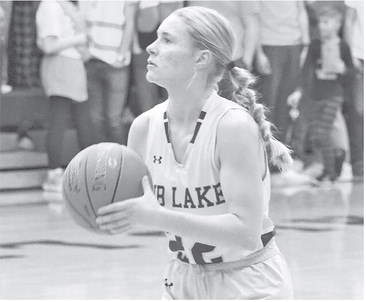It’s not Christmas in July, it’s Festivus grievance time in July


If you were a fan of Seinfeld in the 1990s, you are probably aware of the Festivus holiday, which includes an airing of grievances.
It’s about five months early to be celebrating “Festivus for the rest of us,” the fictional holiday that became famous when a Dec. 18, 1997 episode of Seinfeld hit the airwaves, but do we really need a calendar to decide when it’s time to air some sports grievances?
Timing is what it is and, personally, a few complaints have emerged this July.
First: Quarterback salaries. This one isn’t necessarily new, but it’s taking on a new life in Wisconsin where the Green Bay Packers’ Jordan Love is apparently closing in on a new contract that some reports suggest could average $70 million per season. Love and his agents decided last weekend, that Love would not partake in training camp practices until a new contract extension is finalized. He is present at camp, so this isn’t a hard-line, ugly holdout … at least not yet.
But I’m sorry. If the recently-retired Tom Brady and his countless Super Bowl rings never made more than $25 million per year on an NFL contract, then Jordan Love certainly shouldn’t be making $60 or 70 million in a year. Not based on 18 career regular-season starts, two career playoff starts and a 10-10 team record in those starts.
This grievance is not really about Love. At the risk of repeating myself, which I’m sure I’ve done in this newspaper space many times in 26 years, the grievance centers around the idea that football is supposed to be “the ultimate team game.” Eleven players working as one to matriculate the ball on a 100-yard by 53 1/3-yard rectangle or stop the other team from doing so.
No one is denying that quarterbacks aren’t important to an NFL team’s success. But I can’t buy into the idea that a team’s entire salary cap has to be structured, and sometimes obliterated for years if you blow a contract, around one guy on a 53-man roster. Teams have won Super Bowls with “meh” quarterbacks like Joe Flacco, Brad Johnson, Trent Dilfer, Jim McMahon and Jim Plunkett. Not sure if Eli Manning ranks as “meh,” but he’s not far from it.
NFL contract language and salary cap rules are well above my pay grade, and the true value of these deals isn’t always what they sound like. But man, when I look at a list that says Joe Burrow, $55 million; Trevor Law-rence, $55 million; Jared Goff, $53 million; Kyler Murray, $46 million; Deshaun Watson, $46 million; Kirk Cousins, $45 million and Patrick Mahomes just $45 million for average per year salaries, I shake my head and pray for the front office reps who gave the players these deals.
The Packers have been praised for their handling of Love. Many did not agree, myself included, with the timing of the draft pick in 2020. But being able to not push him into playing immediately paid off. It took one quarter of mop-up duty in Philadelphia in 2022 for Love to convince me 2023 was his time to take over. But once you get past that five years of rookie contract control, the Packers are dealing with the other edge of the sword determining if Love should be paid so much based on so little playing time, at least compared to the other quarterbacks on the high end of the pay scale.
Yes, Love is the driving force behind the excitement that’s built up in Titletown since last November when things in Green Bay’s extreme youth movement started falling into place. He could be great. I hope he is. But, for me, the excitement of what the next few years could be is equally based on the talent around Love that I’d like to see Green Bay be able to afford to pay too.
Second grievance: Streaming TV. I wasn’t home Sunday afternoon to follow the Milwaukee Brewers’ thrilling 8-7 win at Minnesota and I’m not sure if I’ll be home Aug. 2 to follow their game in Washington or Aug. 9 to follow their game against Cincinnati.
But I’ll be darned if I’m going to subscribe to RokuTV and Apple TV+ just to watch these games if I am home.
I’m fine with the occasional Fox national game on Saturday or the extremely rare Sunday Night Game on ESPN to watch Milwaukee. But these streaming partnerships are driving not-so-young people like myself nuts. Give me the one spot on my channel guide where I know I can find my team’s games and keep them there, please!
I know, I know, at some point I’m going to have to accept that streaming and on-demand isn’t just the future of TV, it’s the present. It allows folks to watch what they want, when they want and where they want if all they have at the time is their phone. Sounds great. I can’t stand to watch much of anything on a 3inch screen for more than five minutes.
It’s only going to get worse. The Packers’ season opener is on Peacock and Big Ten football has started going that route too. No thanks. The Friday night Packer opener in Brazil will take a back seat to the Antigo at Medford game anyway. Thursday night NFL football on Amazon Prime, now we’re talking Christmas Day games on Netflix, NFL Sunday Ticket on YouTube, the NBA is trying to go to Amazon and Peacock, make it stop! How many subscriptions does a basic sports fan need?
Take me back to the day NFC vs. NFC games and NFC at AFC games were on Fox (or CBS before 1994), AFC vs. AFC games and AFC at NFC games were on CBS (or NBC before 1998). If your team played on Monday, great. Easy to find. If it played on Sunday night, great. Easy to find.
Third grievance: Major League Baseball All-Star uniforms.
Someone should really ask the idiots who design these uniforms if they would be caught in public wearing them? Is there some kind of contest among fashion designers to see who can make the game’s biggest stars look the silliest?
If MLB is going to insist each team be represented in the All-Star Game (a concept I agree with), those teams should be represented by their uniforms and logos.
As a young fan growing up, I always thought it was the coolest thing to see the Brewers’ uniforms when the teams were announced pre-game. Heck, I still do. I still watch those introductions just to hear, “from the Milwaukee Brewers …” With all of the foreign players now American fans might not be as familiar with and players not staying with one team for long periods of time like they did years ago, it’s common sense these All-Stars need to be wearing their own team uniforms for the game itself.
While all-star games in the major US sports mean very little anymore, the baseball game is the one that still feels like it has a shred of integrity. But the main reason people watch really isn’t to cheer for a certain league. It’s either to see how their favorite players do or to see how the representatives from their favorite team do. Putting every player in the same hideous uniform so you can’t even tell them apart defeats the purpose of the game if you ask me.
Matt Frey is the Sports Editor at The Star News.





